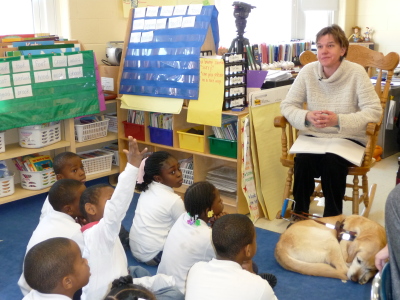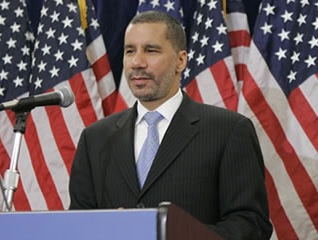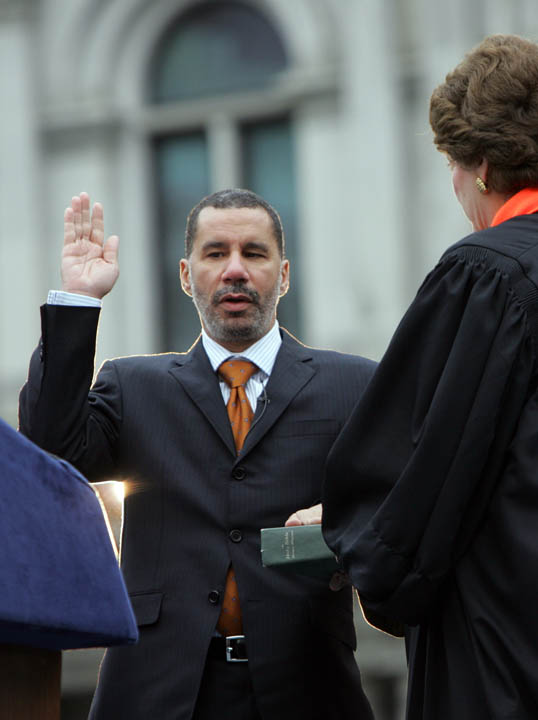Money Talks — I Wish!
February 1, 2009 • 12 Comments • Posted in blindness, Uncategorized I keep track of money by folding each denomination differently. Twenties are folded in half, tens down to three-quarter size. Fives get the end folded into a triangle and singles I just leave be. I have to trust cashiers not to cheat me – I ask them to call out each bill as it’s placed in my hand, then make them wait as I fold it and put it in my wallet before presenting the next bill.
I keep track of money by folding each denomination differently. Twenties are folded in half, tens down to three-quarter size. Fives get the end folded into a triangle and singles I just leave be. I have to trust cashiers not to cheat me – I ask them to call out each bill as it’s placed in my hand, then make them wait as I fold it and put it in my wallet before presenting the next bill.
Last Tuesday’s What Would You Do? show on ABC TV featured a segment about how onlookers reacted when a cashier shortchanged blind Customers.
With the cooperation of Gencarelli’s, a bakery in Bloomfield, N.J., ABC News rigged the store with hidden cameras and hired two blind actors to pose as customers and another actor to portray the unscrupulous salesclerk… She {the blind woman} paid for the $16 cake with a $50 bill. After receiving her change, she asked for assistance in deciphering the bills and was met with even more harsh words.
“What? I have to count this. What am I, the heritage for the blind or something?”
If this wasn’t bad enough, the clerk also cheated her. He handed her what he said were a $20 and a $10, but they were actually singles. Would anyone step up to help the blind woman?
The show mentioned a ruling last year by a federal appeals court that the U.S. currency system discriminates against blind people. In fact, nearly 180 nations around the world use print paper money, and the United States is the only one that prints bills all the same size and color, no matter how much each bill is worth.
The Washington Post reported that the court decision last May was not a unanimous one, and some high muckity-mucks weren’t exactly happy with the ruling, either. The National Federation for the Blind (NFB) strongly opposed the 2002 lawsuit that led to the ruling. They figure that most blind people have found ways to cope with paper currency and say there are other, more pressing needs to address. Treasury Secretary
Henry M. Paulson, Jr. testified against it, too.
Paulson said the blind can function adequately using credit cards or electronic scanners that identify different bills, and by relying on help from others.
The NFB and Paulson do have a point there. In the 20+ years I have been blind, I have never been shortchanged by a cashier. Even Chicago cab drivers – who have a reputation for being rude – have been honest with me, correcting me when I’ve made mistakes and tried to pay them too much. Still, I feel pretty stupid sometimes when a bill unfolds itself, or gets mangled up in my wallet, and I have to ask what money I’m carrying.
Judge Judith W. Rogers wrote the federal court’s majority opinion, explaining it this way:
“The Secretary’s argument is analogous to contending that merely because the mobility impaired may be able either to rely on the assistance of strangers or to crawl on all fours in navigating architectural obstacles…they are not denied meaningful access to public buildings,” Rogers wrote.
In finding for the American Council of the Blind, which first brought the lawsuit in 2002, the court said Treasury did not prove that changing the currency system would unduly burden the federal government. Instead, it found that altering the size or shape of bills would not cost substantially more than other changes the government made in 1996 and 2004 to deter counterfeiting
This court case is supposed to be paving the way for a future redesign of American paper bills, but the jury (literally) is still out. The new system would not necessarily have to use Braille — an embossed stripe on the five, two stripes on the ten, that sort of thing would suffice. The American Council of the Blind has suggested distinguishing bills of different amounts by changing their size, adding embossed dots or foil to the paper or using raised ink. The government worries that changes like those would be costly, however, and could interfere with anti-counterfeiting efforts.
It’s up to the federal government to decide whether to appeal the case to the Supreme Court. Until then, those of us who are blind will have to continue relying on the kindness – and honesty – of strangers.



